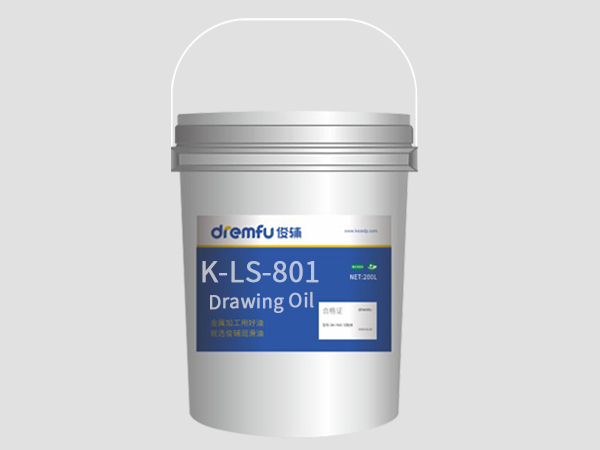2025-11-26 15:42:12
Manufacturers who work with copper components face constant challenges related to tool wear,production downtime,and quality consistency.Whether producing copper tubes,connectors,radiators,or stamped copper parts,the interaction between metal and tooling is intense.Without proper lubrication,friction quickly damages the dies,punches,and forming surfaces.This is why many production facilities rely on a specialized lubricant known as Copper Stretching Oil.Its unique formulation plays a critical role in reducing tool wear and ensuring that forming operations remain stable and efficient.
Every copper forming process involves direct metal-to-metal contact.During stretching or deep drawing,pressure is concentrated along critical areas of the die,and this pressure can cause immediate micro-scratches if lubrication is insufficient.Copper Stretching Oil prevents frictional contact by creating a strong lubricating film that separates the tool surface from the copper workpiece.This film reduces shear stress and distributes pressure more evenly,which significantly decreases mechanical wear on the tooling.
As production speed increases,heat becomes another major factor that accelerates tool wear.Copper’s high thermal conductivity makes it sensitive to friction-generated heat.If the temperature rises too quickly,the tool surface may suffer fatigue damage,especially at the edges of forming zones.Copper Stretching Oil helps manage this heat by dissipating it continuously throughout the forming cycle.The cooling ability of the oil keeps the tool surface temperature stable,preventing thermal cracks and extending the tool’s operational lifespan.
Another advantage of using Copper Stretching Oil is its ability to prevent copper adhesion.When copper particles stick to the die surface,they create abrasive points that scratch both the tool and the next batch of workpieces.This increases tool maintenance frequency and reduces product consistency.With high-quality Copper Stretching Oil,a protective chemical layer forms on the tooling surface that blocks copper particles from bonding.This prevents galling,scoring,and micro-welding,which are the most common causes of premature tool failure.
The chemical composition of Copper Stretching Oil determines how effectively it minimizes wear.Most advanced formulations contain sulfurized extreme-pressure agents,anti-wear additives,and oxidation-resistant base oils.These components react at high load points to create a durable protective coating.This coating adapts to pressure and movement,ensuring smooth sliding even under heavy mechanical stress.Such properties are essential in industries that demand precision,such as electrical components,industrial copper tubing,and heat exchanger manufacturing.

Consistent lubrication also results in smoother machine operation.When Copper Stretching Oil reduces friction,the forming equipment runs with less vibration and noise.This stable movement reduces stress on tooling edges and minimizes the likelihood of micro-chipping.Over long production cycles,these small differences accumulate into a significant extension of tool life.Manufacturers also benefit from fewer machine stops,lower maintenance costs,and improved production efficiency.
Quality control is another area where Copper Stretching Oil contributes value.When tools wear slowly,the dimensional accuracy of copper parts remains stable.This helps reduce scrap rates and ensures that each batch meets the required standards.Many manufacturers report that switching to a high-performance Copper Stretching Oil has reduced defective products caused by surface scratching,inconsistent thickness,and out-of-tolerance dimensions.This is especially important in industries that rely on precision copper parts,such as electronics,telecommunications,power systems,and HVAC components.
Selecting the right viscosity for Copper Stretching Oil also influences tool wear reduction.For heavy-duty deep drawing,higher viscosity oils provide thicker lubrication layers,which are effective for high pressure forming.For high-speed light-duty operations,lower viscosity formulations offer faster flow and better cooling.Choosing the correct viscosity ensures optimal lubrication film thickness and prevents direct contact between the copper and tools.
Another aspect that helps reduce tool wear is the oil’s ability to maintain cleanliness inside the forming area.Oils that resist oxidation and carbon buildup keep the tooling surface clean,preventing residue accumulation.Cleaner tools mean fewer polishing tasks,less downtime,and longer intervals between maintenance cycles.Manufacturers who use premium-grade Copper Stretching Oil often achieve a more stable production rhythm and better long-term cost control.
Ultimately,reducing tool wear is not only about prolonging the life of the dies and punches;it is also about improving overall production efficiency and maintaining high-quality output.Copper Stretching Oil supports these goals by minimizing friction,stabilizing temperature,reducing adhesion,and forming a protective barrier between the copper and the tool.With its specialized formulation designed for copper materials,it delivers superior performance compared to general-purpose lubricants.
For factories aiming to improve production reliability,reduce costs,and enhance surface quality,adopting a high-performance Copper Stretching Oil is a practical and highly effective solution.Its contribution goes far beyond lubrication;it plays a key role in protecting tooling assets,improving product precision,and ensuring smooth,uninterrupted manufacturing operations.